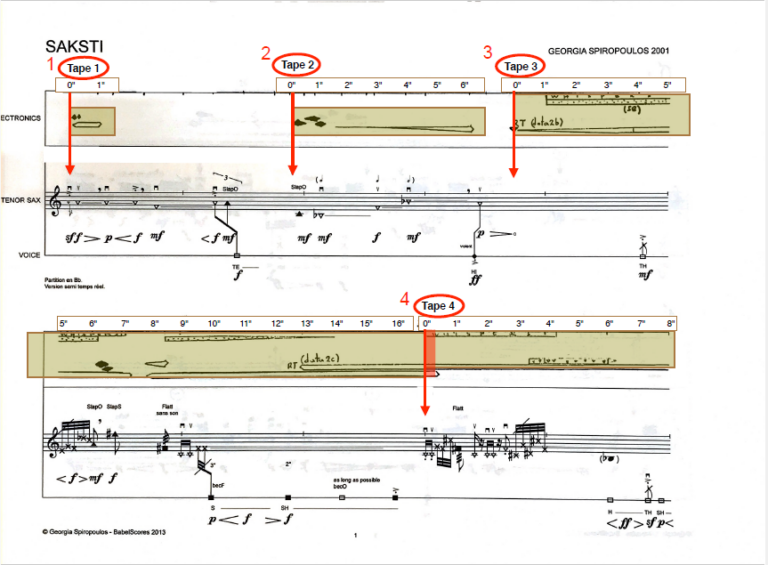
In our previous article we saw how adding sensors to the body of the instrument could be programmed to produce sound effects. While adding gestures to achieve new sounds is not always easy to realize, a solution to the problem appears. It is the triggering of pre-recorded sequences, played by a machine. It used to be a tape recorder, now it’s a computer, but the principle is the same.

But while it is possible to record the sounds produced by the musician, it is also possible to record their gestures - the movement - and replay these gestures on an instrument.
A perfecte example of such a process is the disklavier manufactured by Yamaha and Bösendorfer. Instead of the sound, we record the key movements. It is then possible to replay the pianist’s sequences on the piano in your living room.
Recording the sequences of sound parameter changes lets us delegate the too complex management of the playing to a machine. So it is not the musician who will manage the sound variations through their gestures, but the computer that will, at a given point, reproduce a sequence to affect the sound of the instrument.
We have already seen the example of the MIDI flute, but it implied the addition of sensors to the instrument. Now the idea is to have the computer follow the musician by literally listening to what the musician is playing and trigg the sequences at the places indicated in the score.
In 1986 at IRCAM, Philippe Manoury wrote Jupiter for flute and… computer. It is the first work that uses the process called score following. On the score, the third stave indicates what the flutist is playing, while the two first staves show what the computer accompanying the flutist is playing.
Ten years later, Yan Maresz’s work Metallics for trumpet and computer uses the same process (now called real-time processing). According to the score, the computer will modify the sounds of the trumpet in place of the performer to artificially recreate… mutes!
When the number of sequences to trigger is small, the process can easily be replaced by manual triggering of pre recorded sequences. In this case, an engineer musician who will manage the computer environment can trigger the sequences by hand.
But a lot of musicians prefer to trigger the sequences themselves. The performer only needs one pedal. At the given point, they will trigger the sequence and keep the control - even minimal - of the musical performance of the work.
Here is the example of Kaija Saariaho’s piece NoaNoa, written in 1992, where the sequences are triggered directly on stage by the performer.
In the version for Sampo, the performer not only triggers the sequences, but also plays the effects through his or her gestures, allowing a more personal interpretation of the work.
The triggering of pre recorded audio sequences has been made a lot easier today thanks to dedicated machines. The recording function is also the basis of loopers, which we'll cover in our next article.